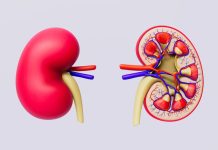
In a new study from King’s College London, researchers found symptoms for early COVID-19 infection differ among age groups and between men and women.
These differences are most notable between younger age groups (16-59 years) compared to older age groups (60->80 years), and men have different symptoms compared to women in the early stages of COVID-19 infection.
In the study, the team analyzed data from the ZOE COVID Symptom Study app between April 20th to 15th October 2020.
App contributors are invited to get tested as soon as they report any new symptoms, thanks to a joint initiative with the Department of Health and Social Care.
The researchers modeled the early signs of COVID-19 infection and successfully detected 80% of cases when using three days of self-reported symptoms.
They compared the ability to predict early signs of COVID-19 infection using current National Health Service UK diagnostic criteria and a Hierarchical Gaussian Process model, a type of machine learning.
The results showed that symptoms of early COVID-19 infection are different among various groups. 18 symptoms were examined, which had different relevance for early detection in different groups.
The most important symptoms for earliest detection of COVID-19 overall included loss of smell, chest pain, persistent cough, abdominal pain, blisters on the feet, eye soreness and unusual muscle pain.
However, loss of smell lost significance in people over 60 years of age and was not relevant for subjects over 80.
Other early symptoms such as diarrhea were key in older age groups (60-79 and >80). Fever, while a known symptom of disease, was not an early feature of the disease in any age group.
Men were more likely to report shortness of breath, fatigue, chills and fever, whereas women were more likely to report loss of smell, chest pain and a persistent cough.
While these models were generated in the COVID Symptom study app, models were replicated across time suggesting they would also apply to non-app contributors.
Although the models were used on the first strain of the virus and Alpha variants, the key findings suggest the symptoms of the Delta variant and subsequent variants will also differ across population groups.
The team says it’s important people know the earliest symptoms are wide-ranging and may look different for each member of a family or household.
Testing guidance could be updated to enable cases to be picked up earlier, especially in the face of new variants which are highly transmissible. This could include using widely available lateral flow tests for people with any of these non-core symptoms.
If you care about COVID, please read studies about how to make COVID vaccines more effective: give people vitamin and mineral supplements and findings of the biggest risk factors for COVID-19 death.
For more information about COVID and your health, please see recent studies about this existing drug could help prevent lung damage in COVID-19 and results showing that 6 FDA-approved drugs show promise against COVID-19.
The study is published in the Lancet Digital Health. One author of the study is Claire Steves.
Copyright © 2021 Knowridge Science Report. All rights reserved.



